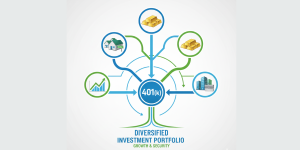Investing in today’s dynamic markets can feel overwhelming, with countless variables affecting your portfolio’s performance daily. While market volatility and economic uncertainties remain beyond any investor’s control, achieving a better investment experience is entirely possible when you focus on proven principles and disciplined strategies.
The key to a better investment experience lies not in predicting market movements or timing perfect entry points, but in establishing a solid foundation built on evidence-based investing principles that have stood the test of time.
A better investment experience doesn’t happen by accident. It requires understanding how markets work, recognizing your own behavioral tendencies, and implementing a systematic approach that aligns with your financial goals and risk tolerance.
Whether you’re just starting your investment journey or looking to refine your existing strategy, the principles outlined here can help you navigate markets more confidently while avoiding common pitfalls that derail many investors. By focusing on what you can control and accepting what you cannot, you set yourself up for long-term success and a better investment experience that can help you achieve your financial objectives.
Like with any other venture, there are things that would be beyond your control when you invest. But the good news is, investing may still be the most financially rewarding thing you can do, given, of course, that you know what it takes to achieve a better investment experience.
So, what can you do to achieve a better investment experience through effective investment management?
Steps To a Better Investment Experience
1. Fully Embrace Market Pricing and Stop Outguessing the Market
You have to accept that the market is truly effective in processing information. With every trade made, buyers and sellers alike bring new data to the market, which helps dictate prices.
The thing is, no one knows what information they’ll get next, but even with that uncertainty, what you can be sure of is that the prices will adapt and adjust to it. Even if the market doesn’t price assets perfectly at all times, it’s still an excellent strategy to accept what the market is telling you—and this acceptance is fundamental to a better investment experience.
Research consistently shows that markets are remarkably efficient at incorporating new information into prices. A comprehensive study by Fama and French found that even professional fund managers, with their extensive resources and expertise, struggle to consistently outperform market indices after accounting for fees and expenses.
This efficiency is driven by millions of market participants, from individual investors to institutional traders, all analyzing information and making decisions that collectively determine fair prices. Understanding this reality is crucial to achieving a better investment experience.
The temptation to identify “mispriced” securities is understandable, but data reveals the challenge of this approach. According to S&P Dow Jones Indices, over a 15-year period, approximately 87% of actively managed funds failed to beat their benchmarks.
This staggering statistic underscores why accepting market pricing, rather than trying to outsmart it, contributes to a better investment experience. When you try to outguess the market, you’re essentially betting that you have information or insights that the entire market has overlooked—a proposition that becomes increasingly unlikely in our information-rich environment.
Don’t make the mistake of trying to outguess the market and think that you can identify securities that are “mispriced,” then use that to get higher returns. The large proportion of mutual funds that did not reach their benchmarks proves that fair market pricing goes against that idea.
Instead of expending energy on attempting to identify mispriced securities, investors who accept market pricing can redirect their focus toward factors that genuinely impact returns: asset allocation, diversification, cost management, and tax efficiency. This shift in perspective transforms investing from a guessing game into a systematic process, ultimately leading to a better investment experience characterized by reduced stress and improved outcomes.
2. Don’t Try to Chase Past Performance
Another mistake that you should avoid when seeking a better investment experience is choosing mutual funds based on how they performed in the past, when the fact of the matter is, their performance history doesn’t offer much insight into its future. The investment industry’s common disclaimer—”past performance does not guarantee future results”—exists for good reason, and understanding this principle is essential for a better investment experience.
Academic research has thoroughly examined the persistence of mutual fund performance, with sobering conclusions. A landmark study published in the Journal of Finance analyzed mutual fund performance over multiple time periods and found virtually no evidence that top-performing funds in one period maintained their superiority in subsequent periods.
This research demonstrates why chasing past performance rarely leads to a better investment experience.
The phenomenon known as “survivorship bias” further complicates the picture. When we examine fund performance data, we typically see only the funds that survived—the ones that didn’t close due to poor performance.
Research by Elton, Gruber, and Blake estimates that survivorship bias can overstate average fund performance by 1-2% annually. This means that the past performance figures investors review are actually more favorable than the true historical experience, making performance chasing even more problematic for achieving a better investment experience.
Consider this: Morningstar data reveals that only about 10% of funds that ranked in the top quartile over a five-year period managed to stay in the top quartile over the subsequent five years. This statistical reality demonstrates why chasing past performance rarely leads to a better investment experience.
Instead, investors who chase performance often find themselves buying high and selling low—entering funds after strong performance runs have ended and exiting after periods of underperformance, precisely the opposite of successful investing. A better investment experience comes from selecting investments based on sound principles, diversification, and cost-efficiency rather than recent returns.
3. Practice Diversification
Diversification stands as one of the most powerful tools for achieving a better investment experience, yet many investors fail to implement it effectively. The concept, sometimes called “the only free lunch in investing,” works because different asset classes and market segments don’t move in perfect tandem.
When one investment category experiences declines, others may remain stable or even increase in value, smoothing your overall portfolio returns and contributing to a better investment experience.
Within your home market, diversification should extend across multiple dimensions. Consider diversifying across company sizes—from large-cap established firms to small-cap growth companies.
Each category offers distinct risk-return characteristics. Large-cap stocks typically provide stability and dividends, while small-cap stocks often deliver higher growth potential with increased volatility.
By holding both, you position your portfolio to benefit from various market conditions, which is essential for a better investment experience.
Sector diversification is equally crucial for a better investment experience. Technology stocks might soar during periods of innovation, while utility stocks often provide stability during economic uncertainty.
Healthcare, financial services, consumer goods, energy, and real estate all respond differently to economic cycles. A well-diversified portfolio ensures you’re not overly dependent on any single sector’s performance, contributing to a better investment experience through reduced volatility.
Global diversification adds another layer of risk mitigation. While U.S. markets have performed exceptionally over certain periods, international markets have led during others.
Emerging markets offer exposure to economies growing faster than developed nations, though with additional risk. Developed international markets provide access to successful companies headquartered outside the U.S.
According to MSCI data, correlations between U.S. and international markets, while increasing over time, remain imperfect, offering genuine diversification benefits that enhance your better investment experience.
Asset class diversification extends beyond stocks. Bonds typically move differently than equities, providing ballast during stock market declines.
Real estate investment trusts (REITs) offer exposure to property markets. Commodities can serve as inflation hedges.
Each asset class contributes unique characteristics to your portfolio, working together to create a better investment experience.
Modern portfolio theory, developed by Harry Markowitz, mathematically demonstrates that proper diversification can reduce risk without necessarily reducing expected returns—perhaps the clearest path to a better investment experience. The key is maintaining your diversified approach through various market conditions, resisting the urge to concentrate holdings in whatever performed best recently.
It’s okay to start by diversifying within your home market, but once you feel comfortable about it, you should consider diversifying globally to maximize your better investment experience.
4. Understand Risk and Return Relationships
Understanding the relationship between risk and return is fundamental to achieving a better investment experience. Markets compensate investors for bearing risk—assets with higher expected returns typically come with increased uncertainty and volatility.
This risk-return tradeoff isn’t a flaw in the system; it’s a fundamental characteristic of how capital markets function, and grasping this concept is essential for a better investment experience.
Equities historically have delivered higher returns than bonds over long periods, but with substantially greater year-to-year volatility. According to data from Ibbotson Associates spanning 1926 to present, U.S. stocks have returned approximately 10% annually on average, while bonds have returned around 5-6%.
However, stocks have experienced numerous years with double-digit losses, while high-quality bonds have provided more stable, predictable returns. Understanding these patterns contributes to a better investment experience.
The critical insight for achieving a better investment experience is that this volatility represents the “price” you pay for higher expected returns. Investors who understand and accept this tradeoff can structure portfolios aligned with their time horizons and financial goals.
Someone investing for retirement 30 years away can typically accept more volatility in exchange for higher expected returns, while someone nearing retirement might prioritize capital preservation to maintain a better investment experience throughout their golden years.
Risk tolerance—your psychological ability to withstand investment losses without making poor decisions—must be distinguished from risk capacity—your financial ability to absorb losses. A 35-year-old with stable employment and decades until retirement has high risk capacity even if their emotional risk tolerance is lower.
Conversely, a retiree depending on portfolio income might have low risk capacity regardless of their comfort with volatility. Aligning your portfolio’s risk level with both your capacity and tolerance creates a better investment experience by reducing the likelihood you’ll abandon your strategy during market turbulence.
5. Take Your Emotions Out of the Equation
Behavioral finance research has identified numerous cognitive biases that undermine investor success, making emotional discipline essential for a better investment experience. Loss aversion—the tendency to feel losses approximately twice as intensely as equivalent gains—causes investors to sell winning positions too quickly while holding losing positions too long, hoping to avoid realizing losses.
Recognizing and overcoming these biases is crucial for a better investment experience.
Recency bias leads investors to overweight recent events when making decisions. After a strong bull market, many investors become overconfident, increasing risk exposure precisely when markets may be due for a correction.
Conversely, after market declines, fear drives many to reduce equity exposure, often near market bottoms. Research by DALBAR Inc. consistently shows that average investor returns significantly lag market returns, primarily due to poorly timed buying and selling driven by emotions rather than the disciplined approach needed for a better investment experience.
Herding behavior compounds these challenges. When friends, colleagues, and media commentators discuss their investment gains, the fear of missing out (FOMO) can overwhelm rational decision-making.
During the late 1990s technology bubble, countless investors abandoned diversified portfolios to chase dot-com stocks, ultimately suffering severe losses when the bubble burst—a painful lesson in why emotional discipline is essential for a better investment experience.
It might be challenging, but you should try hard to separate your emotions from your investment decisions. As much as possible, don’t take it personally when the market movements affect your securities negatively.
Markets do get up and down, and by becoming too emotional about it, you could end up making poor decisions instead of good and logical ones that lead to a better investment experience.
Achieving a better investment experience requires implementing systems that counteract emotional decision-making. Automatic rebalancing forces you to buy low and sell high by systematically adjusting your portfolio back to target allocations.
When stocks have risen, rebalancing requires selling some and buying bonds; when stocks have fallen, it requires the opposite—mechanically implementing the “buy low, sell high” principle that defines a better investment experience.
Working with a financial advisor provides external accountability and objective perspective during emotionally charged market environments. When your portfolio has declined 20%, an advisor can provide context, remind you of your long-term plan, and prevent destructive decisions.
Dollar-cost averaging—investing fixed amounts at regular intervals—removes timing decisions entirely, helping maintain discipline regardless of market conditions. These systematic approaches transform investing from an emotional challenge into a better investment experience guided by planning rather than feelings.
6. Focus on What You Have Control Over
Distinguishing between controllable and uncontrollable factors is perhaps the most empowering step toward a better investment experience. You cannot control market returns, economic cycles, geopolitical events, or Federal Reserve policy.
You can control your asset allocation, investment costs, tax strategy, diversification approach, savings rate, and behavioral discipline—all factors that significantly impact your better investment experience.
Investment costs exert an enormous, controllable impact on long-term returns and your overall better investment experience. A mutual fund charging 1.5% annually versus an index fund charging 0.05% might seem marginally different, but over 30 years, that 1.45% annual difference compounds dramatically.
On a $100,000 investment growing at 8% annually, the low-cost option would accumulate approximately $1,006,000, while the high-cost alternative would reach only $661,000—a $345,000 difference attributable solely to fees. Minimizing costs—through low-cost index funds, ETFs, and fee-only advisors—directly enhances your better investment experience.
Tax efficiency represents another controllable factor with substantial impact on your better investment experience. Tax-loss harvesting, asset location strategies (placing tax-inefficient investments in retirement accounts), and long-term capital gains treatment can significantly improve after-tax returns.
Municipal bonds might offer lower stated yields than corporate bonds, but for investors in high tax brackets, their after-tax returns may be superior, contributing to a better investment experience.
Your savings rate trumps investment selection in determining financial success, especially early in your accumulation phase. Someone investing $500 monthly in a diversified portfolio returning 7% will accumulate more wealth than someone investing $300 monthly in a portfolio returning 9%.
While both factors matter, the contribution amount is entirely within your control and directly impacts your better investment experience.
Any financial advisor worth their salt will tell you that you need to focus only on what you can control instead of over analyzing the things you can’t do anything about. Creating a written investment policy statement documents your strategy, establishing guidelines that govern decisions during both euphoric and fearful markets.
This document—outlining your goals, time horizon, risk tolerance, asset allocation, and rebalancing approach—serves as your North Star, helping you maintain course toward a better investment experience regardless of market noise. You can also work on managing your expenses and taxes, and last but certainly not least, you need to stay focused and disciplined no matter what dips and swings may happen with the market.
Achieving Your Better Investment Experience
Achieving a better investment experience isn’t about predicting market movements or finding the next high-flying stock. It’s about implementing proven principles, maintaining discipline, and focusing on factors within your control.
By embracing market pricing, avoiding performance chasing, diversifying globally, managing emotions, minimizing costs, and optimizing taxes, you create the foundation for long-term investment success and a better investment experience.
As you can see, there are ways to achieve a better investment experience. By following these tips from a fee-only financial planner, you can make the most of your investment journey and maybe even have fun doing it.
The journey toward a better investment experience often benefits from professional guidance. A CERTIFIED FINANCIAL PLANNER® in Charlotte, North Carolina, can provide objective advice, help you avoid costly mistakes, and maintain perspective during market turbulence.
Calamita Wealth Management, wealth management firm in Charlotte, NC, specializes in helping clients implement evidence-based investment strategies tailored to their unique circumstances.
We can provide you with comprehensive financial planning, retirement planning, and investment management services designed to help you achieve a better investment experience. Contact us today to discover how we can help you reach your long-term financial goals!








